WESTERN ROUTE BAKU — HAJIGABUL — KURDAMIR — MINGACHEVIR — YEVLAKH — TARTAR — NAFTALAN — GANJA — GOYGOL — DASHKASAN — SHAMKIR — GADABAY — TOVUZ-AGSTAFA-GAZAKH
HAJIGABUL
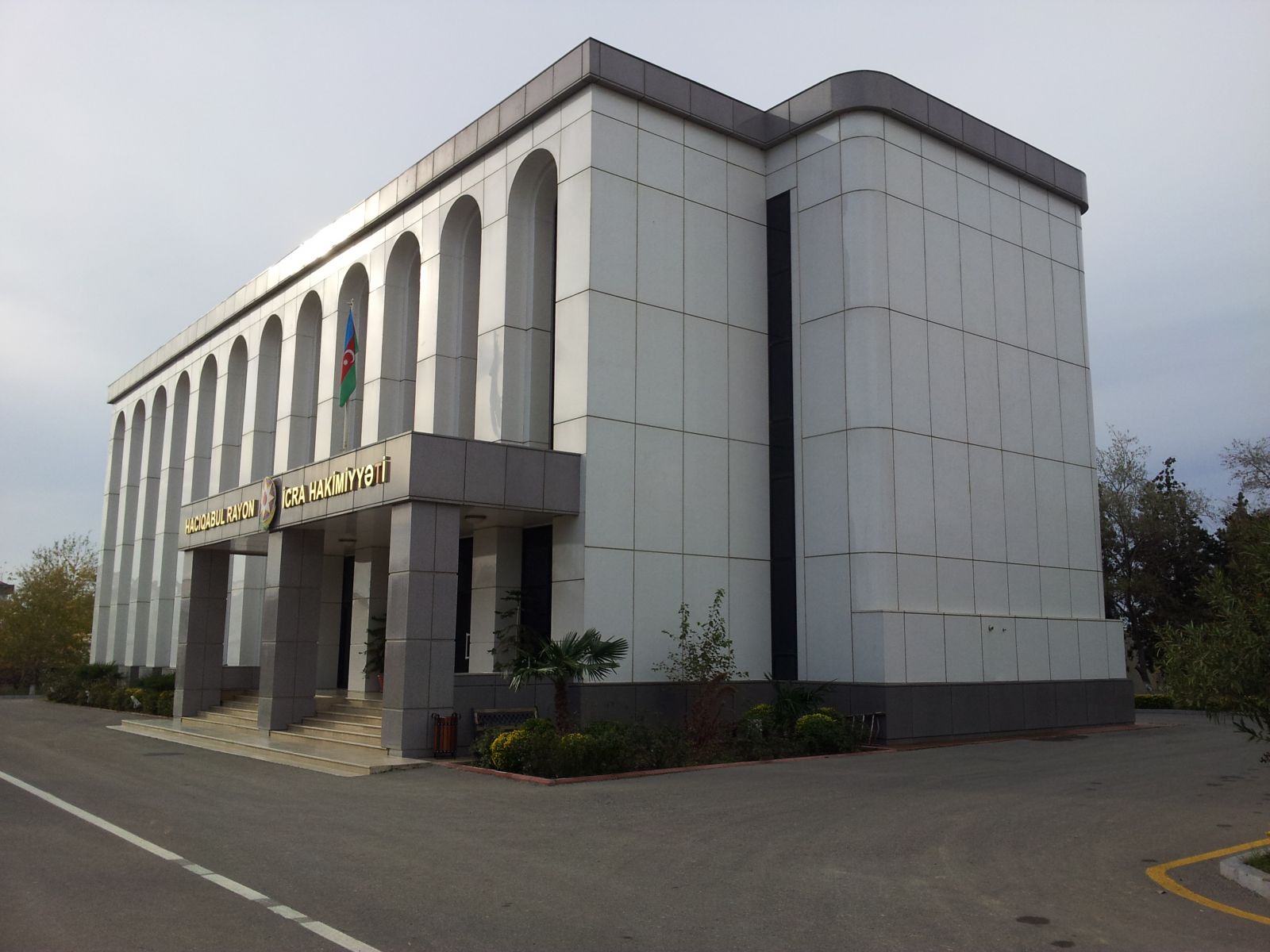
Hajigabul District of HAJIGABUL region occupies part of the fertile ancient Mugan land in the Kur-Araz lowland. Climate is semi-desert, dry and hot, winter is mild. HAJIGABUL lake created as a result of natural laying of the Caspian Sea in a certain geological period is in the territory of this region. Water area of the lake has been expanded as a result of flooding of Kura River in spring time. The hot waters of the State Power Station of Ali Baryamli (DRES) are also entering this lake. This lake, whose depth does not exceed 5 meters, does not freeze in winter. It is of great importance as a suitable place for wintering migratory birds and nesting of waterbirds. Many of these birds belong to rare species that have reached the limit of extinction.
Carpet weaving has been widely developed here since ancient times. The tradition of weaving handmade carpets called "yellow carpet" of Shirvan school is still going on.
The administrative center of the district is HAJIGABUL city, 113 km from Baku. The meaning of his name is "May God accept your pilgrimage". The visit of Muslims to the holy cities of Mecca and Medina is called "pilgrimage". A person who has made a pilgrimage is awarded the honorary rank of "Haji" and this word is added to the beginning of his name. In essence, the pilgrimage is a complex of spiritual concepts and includes requests for mercy from God and various repentance. Therefore, from the name of the city of Hajigabul it is known that this place was not only a place for trade caravans, but also a place for pilgrims. Sometimes pilgrims went by caravans, and some pilgrims vowed to go to the pilgrimage on foot. There were caravanserais here to welcome both pilgrims and merchants traveling to the gulf region of Iran.
In XVII century Shah Abbas built a large caravanserai near Hajigabul Lake, and during the rule of the Safavid dynasty a city was built and at that time this city was called Mahmudabad. Later this name was forgotten and the city began to be called Hajigabul again. However, 5 thousand years ago people lived in this area — archaeologists have discovered the remains of cyclopean buildings on Mount HARAMI in the north-west of the city. Petroglyphs on the walls of these buildings attract attention. Images of people and unusual, fantastic animals were found on the stones near him. Scientists assume that this object originated in the Eneolithic period. Other historical and architectural monuments remain near Hajigabul. Pir Huseyn khanagah in gubali Baloglan village includes an ancient minaret mosque, fortress walls, caravanserai, residential buildings (XIII-XIV centuries), mausoleum of Sheikh Hussein lived in XI century (this mausoleum built in honor of Sheikhin was erected two centuries after his death), as well as an ancient bridge (XVII-XIX centuries). It is considered to be one of the best in the Muslim East. At present, some of them are kept at the State Hermitage in St Petersburg and the Literature Museum named after Nizami Ganjavi in Baku. The early medieval defense tower remained intact in Udulu village. From the name of this tower it is seen that the people who defended there were determined not to compromise the enemies until the last breath.
KURDAMIR
The center of the region is Kurdamir city. KURDAMIR district is located in Shirvan, the historical region of Azerbaijan, in the north-west direction from Baku. This fertile and beautiful land is very attractive for tourism and Recreation. Sometimes they call it Gulustan.
Summer in Kurdamir is hot and arid. Climate is considered a desert climate. The animal world of the region is diverse — Wild Boars, wolves, foxes, jackals, pheasants, turaj, wild ducks and geese live here. The vineyards of this land are very popular. The most famous grape variety is called" Shirvanshahli". Kurdamir district has also been named by its traditions of carpet weaving. The most popular type of local carpets in the world market is the "Shilyan" carpet. This carpet is woven in the village of the same name near Kurdamir.
KURDAMIR city, the administrative center of Kurdamir region, is located on the Left Bank of Kura River, 189 km from Baku.
YEVLAKH
The center of the region is Yevlakh city. Yevlakh district is located on the Right Bank of the river Kura and is one of the major cities of the region called GANJABASAR (formerly called Ganja Khanate) among el. Ganjabasar region covers several regions of Azerbaijan. These regions are united by their common historical and similar geographical-climatic conditions.
YEVLAKH city, the administrative center of yevlakh district, is located 280 km from Baku. Yevlakh is located at the intersection of many roads. Direct roads run from here to Mingachevir, Sheki, Balakan, ganja and Khankendi cities. It is no coincidence that Yevlakh was called "the gate of Karabakh" in the written sources of XII century. Both caravans and travelers passed through these" gates " and drove the flocks of sheep to summer pastures - plateaus, located in Alpine Meadows. A number of archaeological objects related to Bronze Age and early Middle Ages were discovered in Garamammadli, Garanmanli and Khaldan villages of Yevlakh.
MINGACHEVIR
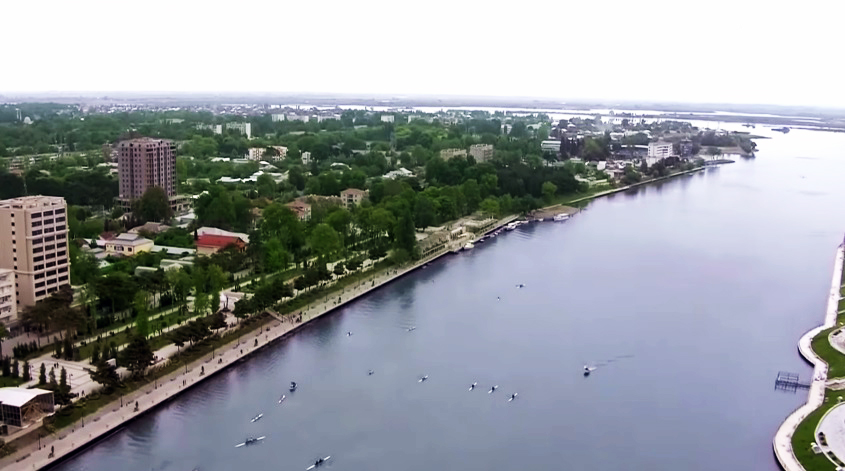
Mingachevir, one of the youngest cities of Azerbaijan, was founded in 1945. Today, this prosperous city, located on the picturesque Bank of the Kura River, is not only the main center of the energy sector of Azerbaijan (65% of all electricity produced in the country is here), but is also of great interest in the development of tourism.
Mingachevir is also known as a sports center. Most of the time, a number of athletes from around the world come to the famous Kura Olympic sports — training center to train. It is worth coming to Mingachevir to eat at least delicious Kura fish, swim on its transparent beaches and take a walk on the boat.
Although the modern city of Mingachevir was established due to the construction of the Mingachevir hydroelectric power station, people lived in the surrounding fertile lands for many years and settled in the Kresahili areas.
Two settlements and 4 large Cemeteries discovered in the south of the Bozdag Ridge and on the Kura Coast are considered the largest archaeological complex in the South Caucasus. About 20,000 samples of material cultural heritage belonging to III-II Centuries BC were found during excavations. The basis of the exposition of the Historical Museum of the city was many topics.
Glassware, gold and silver, jewelry, coins, a number of objects belonging to ancient Eastern cities during archaeological excavations show a high level of development of trade and cultural relations in Mingachevir. In the medieval period, this city is marked as the center of jewel shops, shopping shops, baths. In Soviet times, there was a boarding resort, where during the season a large number of tourists from all over the country rested
The density is observed on numerous beaches today. You can stop at" Kur Hotel"," Agsaray Deluxe Hotel & SPA"," River Side Hotel".
TARTAR
The center of the region is the city of Tartar.
Fertile land of Karabakh is one of the most ancient regions of Azerbaijan. The famous Karabakh Khanate, formerly the central city of Shusha, was located here. There are many historical and architectural monuments, rich fauna and flora in this land. One of the most colorful types of Azerbaijani carpets, the Karabakh carpet was created here, and the famous Karabakh horse breed was grown here. This land, which has such a rich natural condition, has endowed the Azerbaijani land with many talented poets, writers and musicians. The most famous singers-mugham performers (mugham — the national music genre of Azerbaijan) originated from Karabakh. Mugham melodies are the basis of the National opera of Azerbaijan. Unfortunately, today Karabakh has been occupied by Armenians.
Tartar region is located in the lower reaches of the Terterchay, it is bordered by the Incachay to the north, where in winter the temperature does not drop below two degrees, and in summer it rarely exceeds 25 degrees. The climate in the region is diverse-in some regions there is a mulafim climate, and in some places a semi-desert climate. It is due to such changeable climatic conditions that sheep-breeding has developed here. Khachinchay also passes through the territory of this district. In due time, this territory was part of Albania being one of the early state structures of Azerbaijan (Manna, media, Atropaten, Caucasian Albania). Albanians, like other Azerbaijanis, worshiped Zoroastrianism in ancient times, and later adopted Christianity.
The town is associated with enthusiastic people from to the world which having enjoyable. The city is located on both shores of Terterchay, 332 km from Baku. Here, along with animal husbandry and agriculture, they are engaged in ancient folk arts such as carpet weaving, weaving and embroidery. The city of tartar, located on the ancient caravan route, was once called Chaparkhan. There are a number of architectural objects in Tartar, Kangarli, Garadagli, Qaynaq, Azad Garagoyunlu villages of the district.
NAFTALAN
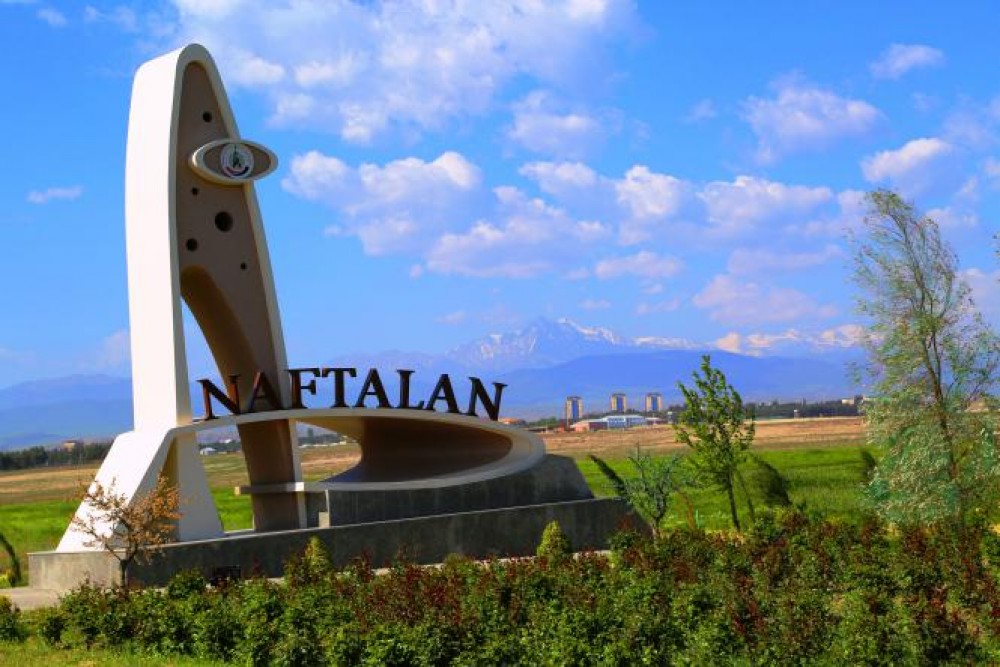
The population of the small NAFTALAN town located in the center of Goranboy region, near the city of Goranboy, is 6.500 people. Patients who come to sanatoriums and boarding houses in this resort city are treated with Naftalan oil and ointments prepared on its basis. Naphthalan oil is a very effective remedy for the treatment of wounds, skin, nervous, Urological and gynecological diseases, as well as soft tissues in the liver, joints and joints, as well as the musculoskeletal system. Naftalan city was built in the place of a small village of the same name. The word "nafta", which forms the basis of this name, means "flowing, straining" in the language of media, one of the ancient state institutions in Azerbaijan.
Several thousand years ago, along with oil, Naftalan was used for various purposes in Azerbaijan. There were not only local residents who used Naftalan oil for the treatment of wounds, but also the soldiers of Alexander The Great, who once attacked Azerbaijan, Roman legionaries and Vikings, Alans of shmchi, Khazars and representatives of other tribes used Naftalan oil for the treatment of wounds. Naftalan was also an export product. It was transported by caravan routes to other countries — Kievan Rus, Central Asia, Afghanistan, India, and Gulf countries of Iran. Marco Polo, a famous traveler of the Middle Ages, described Naftalan oil as "a magical ointment that is a remedy for skin diseases."
When the oil industry began to develop rapidly in Baku in XIX century, the number of engineers, industrialists and bankers from Europe increased significantly in Azerbaijan. In 1874, German engineer Yager was interested in what local residents said about naftalan oil and regulated the production of "Naftalan" oil in Germany. He exported these cattle to different countries of the world. It is clear that the Germans, who produced ointments on the basis of Naftalan in Azerbaijan, were good managers, as this ointment was used not only in European countries. During the Russo-Japanese war in 1904, the pharmacy set of Japanese soldiers included jars with Naftalan ointment. This ointment was used as first aid. On these jars, it was written: "whoever has this ointment in his hand, he should not be afraid of any pain."
Visitors can stay here "Chinar Hotel & Spa", "Naftalan" health center, "Gashalti" sanatorium, miraculous Naftalan sanatorium, "Magic Naftalan" sanatorium, etc.
GANJA
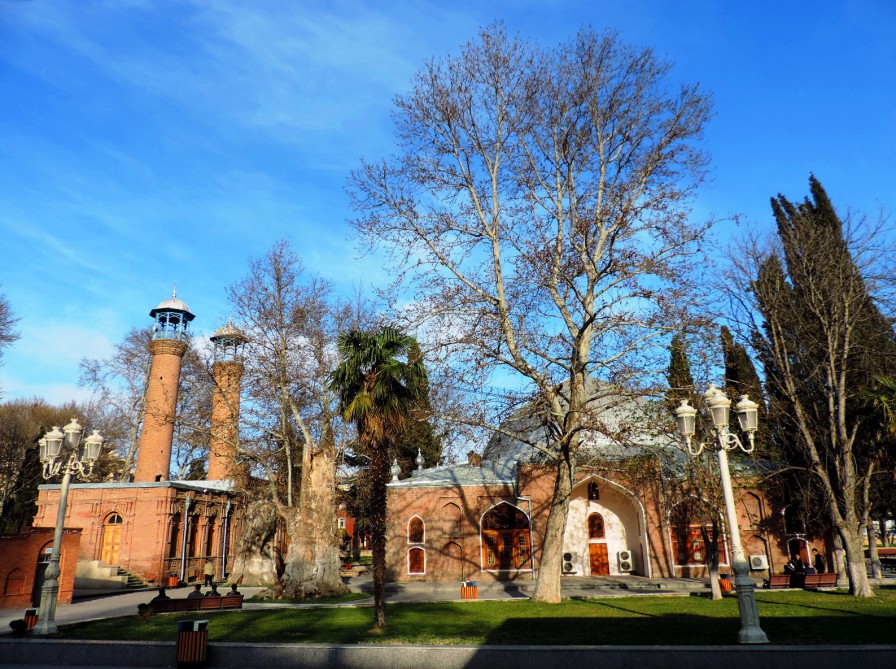
It is located on the banks of the river Ganjachay in the Ganja-Gazakh lowland. The river divides the city into two parts. Here is a kind of boundary of two climatic zones — the temperate-hot semi-desert and dry desert climate, as well as the temperate-hot climate zone. The population of the city is 302,000 people, the distance from Baku is 375 km.
Ganja is the second largest city in Azerbaijan. There are Ganja State University, Academy of Agriculture, Ganja branch of Azerbaijan National Academy of Sciences, Scientific-Research Institute of cotton growing, experimental Agricultural Station. A modern Olympic Sports Complex has been built in the city.
Ganja is the homeland of world-famous poet NIZAMI GANJAVİ, poetess MAHSATI KHANIM, MİRZA SHAFİ VAZEH. There are many historical monuments here: Juma Mosque and its Madrasa, the mausoleum of Sheikh IBRAHIM, the mosques of GIZIL HAJİLİ, OZAN, BALA BAGBANLI, SHARAFKHANLI and SHAHSEVEN, the Big Bridge and small bridge built over the Ganjachay River (XII century), a complex of caravanserais and buildings, goy kashi gumbezli IMAMZADA, and extremely beautiful ancient city baths (bathhouses now work). Visitors are advised to visit the mausoleum of Nizami Ganjavi located at the entrance of the city.
Ganja is one of the most ancient cities that played an important role in the history of our country at different times.
The Arabs called this city Janza. During the excavations in ganja, archaeologists have discovered ancient human settlements dating back to the II century BC, and around Ganja a lot of archeological objects of the Bronze Age.
The history of Ganja is the history of its destruction by the invaders almost to the ground and further progress. Foreign fighters, alan tribes, Mongols, Georgian Princes, Ottomans devastated Ganja during the Caspian-Arab wars. In the XI century, Christian head of Albanians ' residence in Barda was devastated and his residence was moved to Ganja. People who believed in Christian and Islamic religions lived peacefully in Ganja, and goods from Eastern countries to the Black Sea coast were transported by caravan routes passing through this city.

In XII century Ganja was the capital and residence of feudal rulers. However, in that period the city was subjected to two very strong earthquakes. As a result of the earthquake that occurred in 1139, Ganja was devastated, about 250 thousand people were killed. One of the peaks of Kapaz mountain crossed the river AGSU and thus Goygol was created.
In the XVII century, the city was rebuilt 6 km east of the previous place. At the beginning of XVIII century Ganja was again attacked by invaders, and in the middle of that century it became the center of Ganja Khanate. Ganja Khanate existed until the occupation of Russia. In 1804, when the superior forces of the Russian army attacked Ganja, Javadkhan's group heroically defended Ganja, and Javadkhan himself bravely died. After this event in 1804, ganja was renamed to Yelizavetpol in honor of the Russian empress Elizabeth.
In 1918, during the collapse of the Russian Empire, Ganja was the capital of the independent republic of Azerbaijan for several months.
At that time, an officer school was opened in Ganja. In 1935, Ganja was renamed Kirovabad. Only in 1989, on the eve of independence of Azerbaijan and the collapse of the USSR, the historical name of Ganja was returned to him.

At present, HAJIKAND resort zone is located near Ganja. There are many tourist routes, boarding houses, tourist bases and rest houses here.
GOYGOL" State Reserve is the first reserve in Azerbaijan. This reserve was established in 1925 for the purpose of protection and study of ecological systems of middle mountainous, forested and partly subalpine zones of minor Caucasus, as well as Goygol, Maralgol, Zaligol and other mountain lakes, consists of forests and mountain meadows.
Located in the North foothills of Murovdag in the south of ganja, at an altitude of 1566 meters above sea level, Goygol is rightfully considered the Pearl of Azerbaijani lakes. Being the first reserve in the Caucasus, this reserve consists of two parts — the main part and the branch called "ELDAR pine forest". The distance between the two parts of the Reserve is 80-85 km.
Ganja has its own history and Ethnography Museum. Among the exhibits of the museum there are many interesting finds of the Bronze Age. There is a Drama Theatre and a children's Puppet Theatre in Ganja.
Tourists and guests of the city can stay in "Ganja Hotel", "Ramada Plaza Gence", "Vego Hotel", "Deluxe Hotel", "Karvansaray Hotel", located in the city center.
GOYGOL
District center — Goygol city.
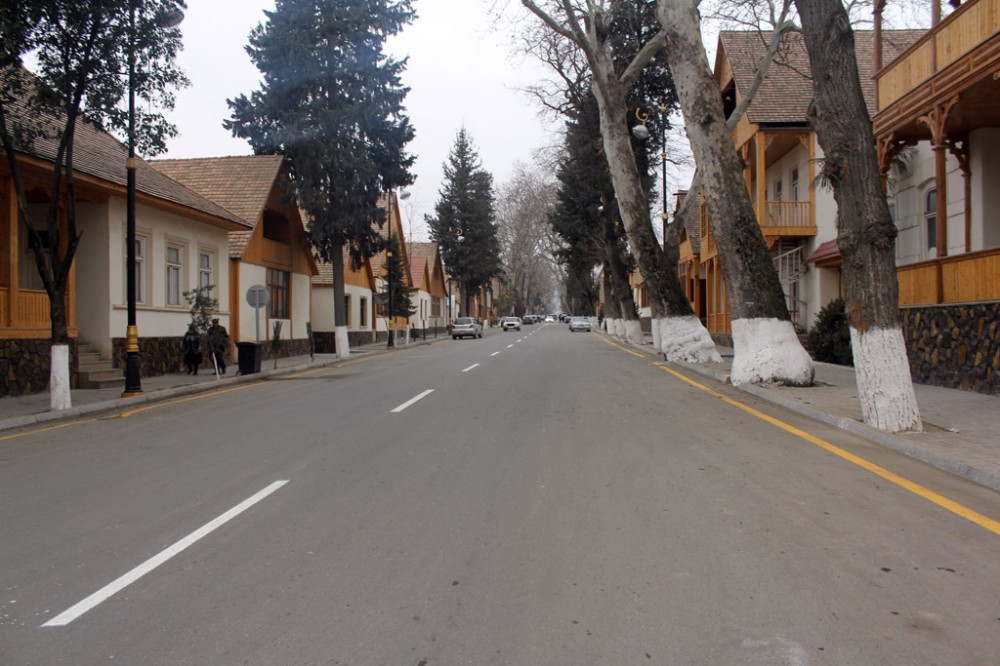
GOYGOL region is located at the foothills of the Lesser Caucasus, slightly south of ganja. Agriculture is well developed in this district, which attracts attention with its extremely picturesque nature. Climate is mild heat. There are especially many places where birds nest. The Ganjachay and Gushkara rivers are great places for hunting and fishing. The highest point of the district is the Murovdag ridge, located at an altitude of 3724 m above sea level. This region is very popular among tourists and ecotourists. When they come here, they stay in the Houses of local residents and in the surrounding villages.
The administrative center of Goygol district is GOYGOL city, located 384 km from Baku.
The city of Goygol was built in XIX century by the Germans displaced in the place of the ancient village called Khanate. In 1819, they planned this city with their own kind and called it Yeleniyendorf. Looking at the smooth streets of this city, facades of houses built of wood, carved works, kirkhaya (Lutheran Church), it is remembered that the Germans used to live here. Under Stalin's orders, local Germans were exiled to Central Asia.
In Goygol there is a museum of local history, a music school, a cinema, numerous cafes and restaurants. Tourists coming to this quiet, green city go on tourist trips on various routes from there. Archaeological finds from the bronze and Iron Age confirm the ancient history of this city. Historical and architectural monuments such as Lutheran Church (1854), two bridges over Ganjachay — "two-eyed bridge" ( XVI century) and "three-eyed bridge" (1896) remained intact. The fortress of XII century in ZURNABAD village, the mausoleum of XVI century in SARI Gaya village, "AG bridge" of XII century in Topalhasanli village, as well as a number of historical monuments in CHAYKAND village can be shown as an example of monuments left intact near Goygol.
DASHKASAN
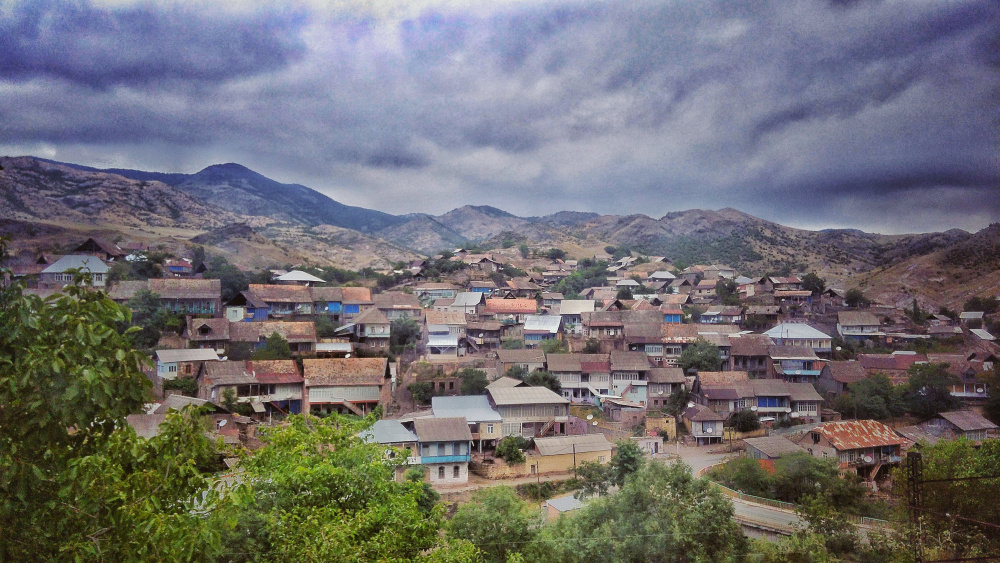
The center of the region is the city of Dashkasan. DASHKASAN district is the center of ore production in Azerbaijan and is located in the northeastern foothills of the Lesser Caucasus. Here the temperature can change very sharply. In winter, up to 20 degrees of frost (in general, this is not typical for Azerbaijan), and in summer-up to 35 degrees of heat, as in Absheron, located in the semi-desert zone. The region's fresh air, mountain pastures and springs, rich in Alpine Meadows, attract both tourists and just vacationers.
Archaeologists have found the remains of ancient settlements of Stone Age in the areas of Khoshbulag, Zagali, Gurbulag, Amirvar, Bayan, Dardarya villages of this region. Two ancient stone bridges built over the GUSHGARA River and the mausoleum in Ahmadli village are historical and architectural monuments that have survived to our time. The monastery built in 487 in gushchu village remained intact. In the village of Bayan you can see the ruins of the Christian temple of XV century.
The administrative center of the district is DASHKASAN city. As you can see from the name of this city, located 397 km from Baku, this region has been famous for stone-carving artists, who have been considered connoisseurs of stone and wood carving since ancient times. At present, carpet weaving and sock weaving arts are well developed here.
In the small restaurants here, customers are offered typical dishes of national cuisine, and in the kebab houses you can taste delicious national dishes made of fresh meat and listen to folk music performed by ashugs (improviser folk singers). Dashkasan honey is considered one of the best types of honey in the Republic. Residents of the nearby city of Ganja love to come to Khoshbulag village of Dashkasan district to relax.
SHAMKIR
The center of the region is the city of Shamkir.
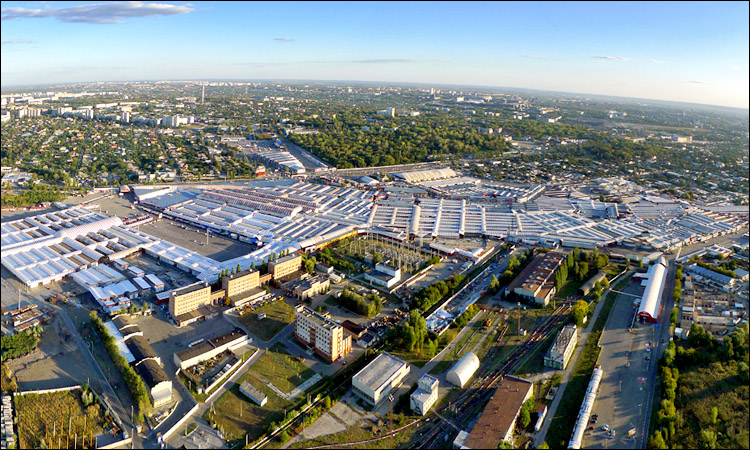
There are many archaeological sites related to bronze and early Iron Age in Shamkir district. They were found mainly in CHANLIBEL, SEYIDLAR and GARAJAAMIRLI villages. There are a number of historical and architectural monuments belonging to the Middle Ages: castles in TATARLI and ASHAGI SEYFALLI villages, bridges built in TAHNALI village and over ZAYAM River, Christian churches in YUKHARI CHAYKEND, GUNESHLI, DAGH JEYIRLI villages can be an example.
There are also places that fishing enthusiasts like — YENIKEND dam on the Kura River is more popular.
The administrative center of the district can be reached in one hour from Ganja to Shamkir city. The distance of Shamkir from Baku is 417 km.
In the XIX century, there was a small colony of German settlers called Annenfeld. As in the Khans, there are several streets and Lutheran churches that are in perfect condition as a memorial to the inhabitants of this colony.
According to written sources and archaeological data this city was built in V-VI centuries on the Bank of the great Shamkir River near the present MUKHTARIYYAT village, 20 km away from modern Shamkir.
In the Middle Ages, there was an 8-tower feudal castle in the city called SHAKUR. Shamkir's riches attracted not only merchants, but also conquerors. Like many ancient cities of Azerbaijan, Shamkir was repeatedly destroyed during its existence, was subsequently restored and a period of progress passed. However, after one of the subsequent attacks, the surviving population of the city moved there and founded a new city.
Around modern Shamkir, there are two ancient castles of XVII century — SHAMKHOR fortress and KOROGHLU fortress (the name of this fortress was chosen as our national symbol in honor of brave Koroglu, who fought heroically against tyrants and villains). Many scholars believe that Koroglu was a real historical figure. But it was not convincingly determined that he really lived in the castle of Chanlibel.
In Shamkir you can stay at" Excelsior Hotel Shamkir " or rent a private house.
GADABAY
The center of the district is the city of Gadabay.
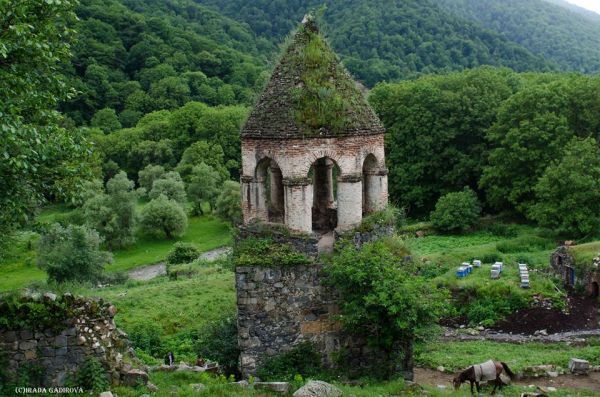
GADABAY region is located in Lesser Caucasus Mountains, as well as high mountains (Goshabulag peak height is 3549 meters, Gojadag peak height is 3317 meters) and mountains of medium height. The diversity of the area above sea level makes climatic conditions different. The tundra climate in the mountainous area gradually shifts to a dry climate with hot summer. The cost of the district center is 462 km from Baku.
Gadabay can be reached either from Shamkir or from Govlar station of Tovuz. Although the Tovuz road is more picturesque, it is difficult for passenger cars to pass this road: "basarkecher" cars are needed here.
There are good conditions for fishing in Shamkir River in Gadabay district. Near the village of GALAKAND there is a private fishing farm. The plant and animal world of gadabay region is rich and diverse. "GIZILAGAJ" Reserve is located on the territory of this district. There are also some natural objects included in the list of objects protected by the state, such as" natural monuments of Azerbaijan" — Pine, cane, JAKDARA, CHOVDU forests. This type of springs are Kechi-Kechi, roe deer, bear, jarga springs, as well as mineral water springs NARZAN, GIZILJA, MORMORE, CHALDASH.
Here, ancient cultural monuments entered the history of Azerbaijan under the name of Khojaly-GADABAY culture, cyclopical buildings of Bronze Age, as well as "GADABAY treasures" — ancient kuzas intended to store House utensils and stone stones, silver coins of XVI century - Shah Tahmasib's reign period were found. These money began from Tabriz (present Iran) to Shirvan and Ganja were in circulation in a wide area.
As an example of the preserved historical and architectural buildings in the region, one can cite the archly bridge (XIX C.), the tower in Gala village (XVI C.), The Maiden Tower in SOYUDLU village (or Namard gala-IX C.), Christian temples of the early Middle Ages in NOVOSARATOVKA, SOYUDLU, CHANAKHCHI and KILAVI villages.
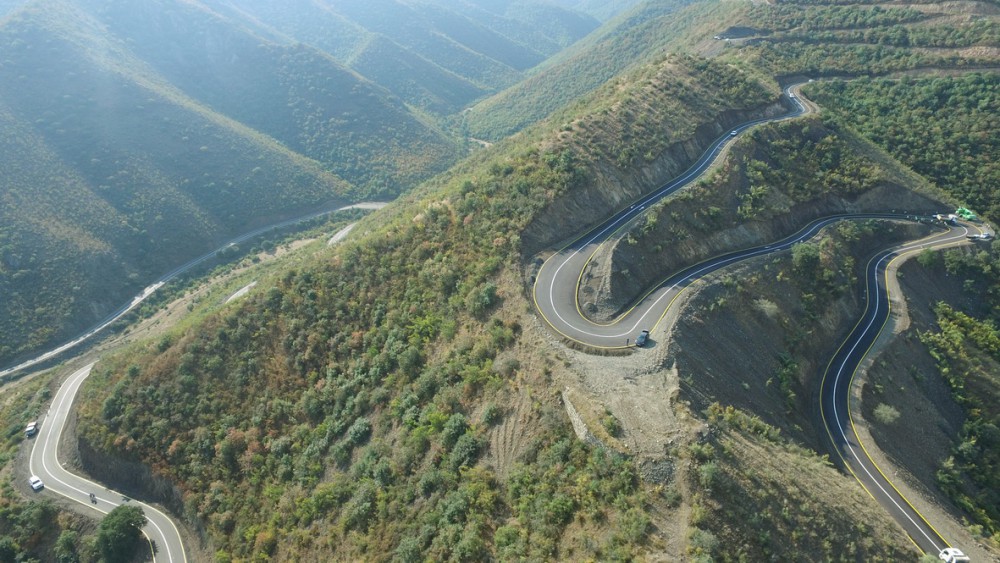
In the village of SARATOVKA live representatives of the old tribe of sects, called "dukhobor" of russians. They have still preserved their material and spiritual culture.
Folk arts such as wood carving, carpet weaving, socks and gloves weaving from colored coarse wool thread, processing of sheep skin are well developed in this region.
The territory of Azerbaijan was in the center of attention of some famous entrepreneurs in the West. For example, the NOBEL brothers got rich at the expense of Baku oil. German company" Siemens " built two copper-smelting plants in Gadabay at the end of XIX century. In Tsarist Russia, about a quarter of all copper was purchased at these plants. The Simens brothers were seriously interested in the history of this unusual land and organized archaeological excavations in this region. According to the results of these studies, the scientific work "GALAKEND" was written.
Visitors can stay at the hotel located in the center of the city.
TOVUZ
Center of the region — Tovuz city.
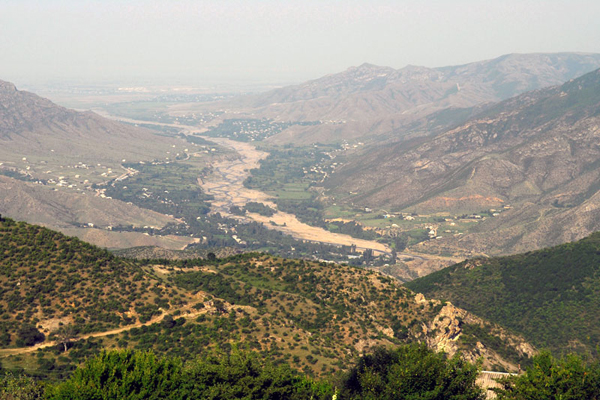
TOVUZ region of Azerbaijan is located in the west of the Republic and borders with Georgia and Armenia. Kura, Akram, Tovuz, Zayam and other rivers flow through the area. On the mountain slopes there are many forests, Springs, a rich world of plants and animals (wolf, fox, hare, turaj, partridge). The climate is dry, here you can hunt mainly rabbits and waterfowl.
Ancient monuments have been preserved in Tovuz district. The most interesting of them are the temple of XII century in KIRZAN village, maschid of XVII century in YANIGLI village, mausoleums in GAZGULU village, fortress in ALIBEYLI village and others. There are also numerous archaeological sites of bronze, iron and early middle ages.
Administrative center of the district — TOVUZ city is located 457 km from Baku.
Like most cities of Azerbaijan, Tovuz was built on the site of ancient human settlements of the Stone Age and Bronze Age. This city has left its mark in the genetic memory of the people to remind the places where our ancestors, who have replaced each other for millennia, lived. According to ancient Turkic written sources, the name of this city was derived from the names of two related Turkic tribes — OGUZ and TOGUZ. This name was established here as a toponym.
The foundation of Tovuz as a modern settlement was laid by German settlers who called it Traubenfeld.
There is small museum of famous ashig Huseyn Bozalganly (1860-1942) in Tovuz. Ashig Huseyn Bozalganli knew the KOROGHLU epos by heart.
Tourists can also stay in local residents ' houses or Ayan Palace Hotel.
AGHSTAFA
District center — Aghstafa city.

AGSTAFA region is located on the foothills of the Great Caucasus, on the border of Azerbaijan with Georgia and Armenia. Climate of the region is mild. Local residents are mainly engaged in livestock and agriculture.
A few small rivers flow through the region and Aghstafachay-the tributary of the Kura River. The lake CANDARGOL is also located here. Located 20 km from the city of agstafa, in the village of TATLI, a spring called GALACHMA is a favorite place for both local residents and tourists. The kebab cooked here is very much liked by the customers.
GARAYAZI State Reserve located on the Bank of the Kura River in an area of 4.9 thousand hectares was established in 1978 to protect and restore Tugay forests, Garayazi lowland and middle stream of Kura River in the zone around the Kura. The main object protected in the Reserve is the Tugay forest Massif.
"GARAYAZI-AGSTAFA" game reserve, established in 1923 on an area of 12.0 thousand hectares, is also located in Agstafa region. The purpose of creation of this reserve was to preserve Caucasian deer, pheasants, feathers, other rare species of animals and birds and increase their head number. The Reserve is located in the tugay forests zone in the middle Bank of the Kura River, on the border between Georgia and Azerbaijan. Flora and fauna of this reserve are identical to the flora and fauna of "GARAYAZI" Reserve, which is directly related to it.
A number of historical monuments have been discovered in the region: near KOCHASGAR village is an ancient settlement called MOLLA NAGHİ Hill of Paleolithic age; 17th century tower and 19th century MASCHID in GIRAG KESEMEN village; 19th century mosques in KOLKHALVALI, GARAHASANLI, DAGKESEMEN and duz GISHLAG villages, etc. There are no numerous monuments of stone, bronze and Iron Age in this area. These facts show that in ancient times the level of settlement of this region was quite high. There is a need for a detailed study of all these archaeological sites and new excavations.
There are defense fort and cave-type monasteries built in Caucasian Albania during early Christianity near Shepherd's fields (places where sheep flocks are grazing in summer) in Keshikchidagh range in the top of agstafa city. During the USSR, this zone was closed for departure and arrival, as military units of the Transcaucasian Military District were located there. For this reason, this unique complex has not been studied properly. There was no departure there, most of the ancient paintings in the caves were broken by artillery fires. This complex belonging to Caucasian Albania, which was one of the state structures of ancient Azerbaijan, is currently being studied by archaeologists of the National Academy of Sciences of the Republic.
AGSTAFA city is located near the Georgian border, 479 km from Baku. This city was established as a railway junction in 1914. This city, the territory of which was small at that time, was called Yelizavetinka.
From here you can get on the train and get to the capital of Georgia-Tbilisi. Special care is taken to preserve historical and architectural monuments and cultural heritage-carpet weaving and ashug art in agstafa. The findings discovered by archaeologists - glass, vases, household items and ornaments are kept in the local museum of local lore.
Tourists can stop at" Medine Hotel"," Nesiboglu Hotel"," Qerb Hotel".
GAZAKH
The center of the region is Gazakh city.

Gazakh district is located near the western borders of Azerbaijan. In general, Gazakh and Agstafa regions are considered the western border not only of modern Azerbaijan, but also of ancient Caucasian Albania. The division of the region into two independent administrative districts — Gazakh and Agstafa took place relatively recently.
There are state-protected historical monuments (monuments of architecture and archaeology): SYNY KORPU (12th century); DAMCILI Cave; Temple of 5th century in YUKHARI ASKIPARA; sugar gala Temple of 15th century; megalith type didevan fortification; complex of Albanian (7th century) temples in DASH SALAHLI village; Attracting attention with the remains of the fortress walls (The Last Middle Ages) GOYAZAN mountain and the remains of ancient urban settlements recently discovered near it.
There are many ancient settlements in the territory of Gazakh region: in AVEY Mountain, Between Dash Salahli and Kamarli villages, in the Valley of the Incisu River, on the north-eastern slopes of the Lesser Caucasus, caves inhabited by Neanderthals (Mustier) period, settlements of chromanion men were found near DAMCILI cave in Avey mountain, Khal-Khal City Place near stylish pink-gold Golden Rock and remains of castle walls were discovered. It is assumed that this area was one of the summer residences of the rulers of Albania. Without any excavation, archaeologists have discovered numerous remains of ceramic dishes of Bronze Age on the surface of the Earth. At one time, the Albanians destroyed Roman Pompey's troops here. This is stated in ancient written sources: "10 thousand cavalry and 60 thousand infantry of Albanians fought against Pompey's troops".
Kurgan graves belonging to the Bronze Age were discovered in the mouth of Barkin located a little west of the Golden Rock. All these historical objects (except Siniq bridge) are located near the city of Gazakh. Thanks to the efforts of the initiators of this land, many archaeological artifacts were collected and exhibited in the Museum of local lore. Those who come to the village of YUKHARI SALAHLI can visit the House of the famous Azerbaijani poet Samad Vurgun.
Relief of Gazakh region-mountains, valleys, rivers (Kura, Agstafachay, Jogaz, Khramchay) has always been favorable for seasonal cattle-breeding. Local shepherds bring and keep herds of sheep from summer pastures (mountain pastures) in winter season. It originates from the natural conditions of this area with local features of folk music and national cuisine. There are a lot of ashugs here, they are invited to various family celebrations and celebrations.
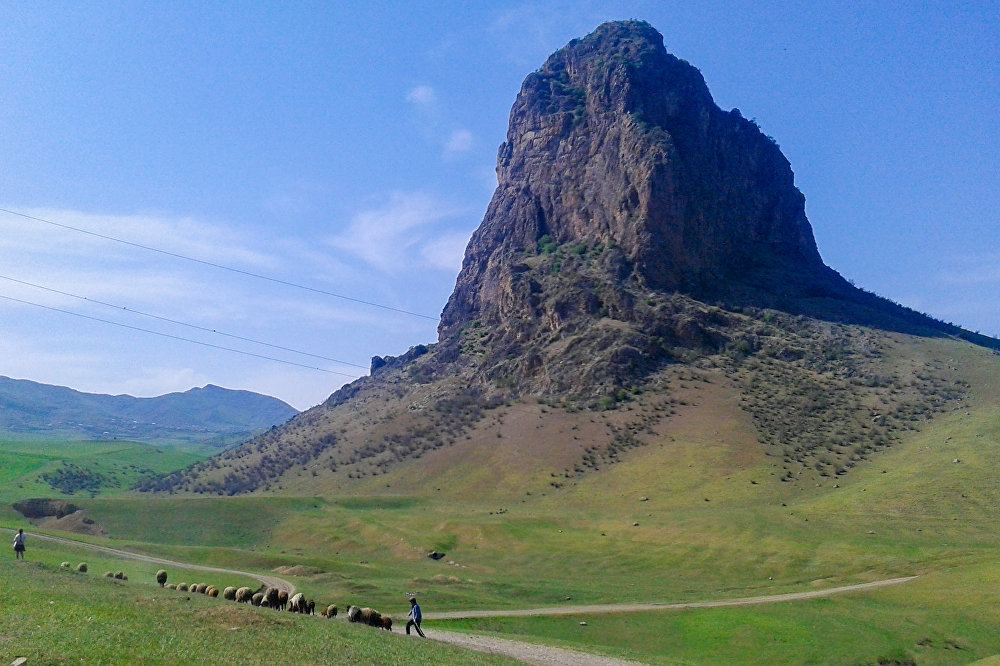
It is assumed that the ancient names of the GAZAKH CİTY are "Kasal" and "Kazaka." According to some written sources, in the 8th century, Marwan ibn Muhammad founded a city here.
Gazakh, the last major city on the western border of Azerbaijan, is home to talented poets and writers. People recognize Kazakhs as people with special poetic feelings. A number of famous ashugs, scientists and military leaders were born here. Poets Samad Vurgun, Molla Panah Vagif, writers Mehdi Huseyn, Ismayil Shikhli, general Aliagha Shikhlinski, who was a participant in the defense of Prot-Arthur fortress, called "God of artillery" and others are originally from Gazakh. In 1917, the first seminary of teachers was opened in Gazakh.
There are museums reflecting the life of famous poets VAGİF and VIDADI, ancient maschid and other interesting objects in the city. Gazakh is also famous as one of the oldest carpet-weaving centers and horse-breeding plants. Especially popular are domestic horses of DILIBOSE breed, which are bred here. The products of Gazakh carpet school such as "Dagh Kesemen", "Gazakh", "Aggoyunlu", "Four Horn", "Damkali", "Shikhli", "Chobankara", "Borchali", "Fahrali" and "Gaymagli" are in great demand in the world market. The cuisine of the Gazakh zone consists mainly of simple, but very tasty meat and flour chokes. Tourists coming here are advised to stay in the Houses of local residents.



